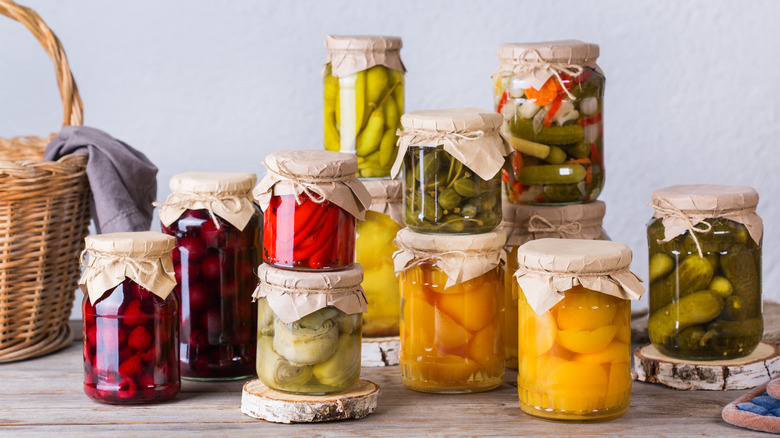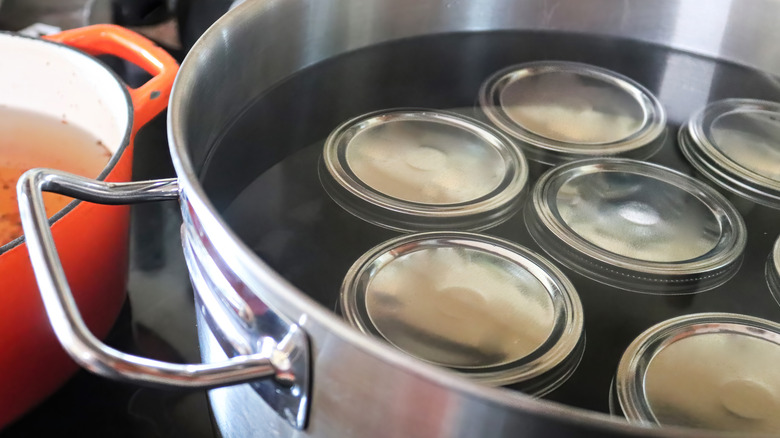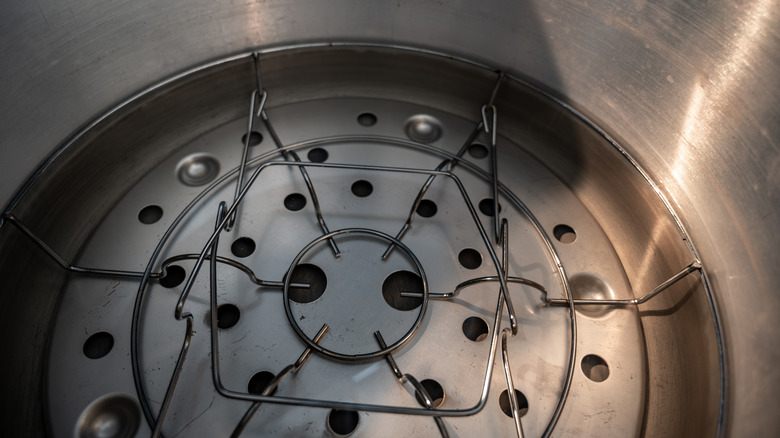What's The Difference Between Water Bath Canning And Steam?
When you think of canning, you might have images of your grandparents' pantry or a cellar filled with shelves of canned fruits and vegetables. But if you have grown a garden or bought your favorite produce in bulk, you might be considering canning the extras yourself to use later.
Canning is a technique that has been used for centuries to preserve food for later consumption. The process of canning involves heating food to a high temperature and sealing it in an airtight container, which prevents the growth of bacteria and extends the shelf life of the food. For those who are new to the process, however, there are a few different techniques you can use. And it's important to consider which one is best for your purposes.
There are two main methods of canning food: Water bath canning and steam canning. Both methods have their own unique benefits and drawbacks, so it's important to understand the difference between the two to determine which one is best for what you plan to cook in the future.
What is water bath canning?
Water bath canning is a process of preserving food in jars by immersing them in boiling water for a specified amount of time. This method is used for high-acid foods, such as fruits, pickles, and tomatoes because the acidity of the food helps to prevent the growth of harmful bacteria, yeasts, and molds.
Water bath canning requires jars with lids, a large pot or canner, a jar lifter, a lid wand, and a funnel, notes Ball Mason Jars. Begin by thoroughly cleaning the jars, lids, and rims. Fill your jars with the prepared food, leaving a headspace of about one inch. Wipe the rims of the jars with a clean, damp cloth to remove any food residue. Place the lids on the jars and screw the bands on until they are just tight. Next, fill the pot or canner with enough water to cover the jars by at least one inch. Place the filled jars into the pot, making sure they are upright. Cover the pot and bring the water to a boil. Once the water has reached a full boil, start timing according to the processing time for your specific recipe. Keep a rolling boil for the entire processing time.
Once the timer goes off, carefully remove the jars from the pot using the jar lifter. Place them on a towel or a cooling rack, making sure they are not touching each other. Let the jars cool for up to 24 hours. As the jars cool, you will hear a popping sound, which indicates that the vacuum seal has been created. Once the jars have cooled, check the lids to make sure they are properly sealed. Store the jars in a cool, dark place for up to one year.
One of the key benefits of water bath canning is its simplicity. There is no special equipment required, and the process is straightforward. Simply fill jars with food, boil them in a pot of water, and let them cool. This makes it a great option for those who are new to canning and want to try their hand at preserving food.
What is steam canning?
Steam canning is a relatively new method of preserving food that uses steam instead of boiling water to heat and preserve the jars of food. This method is also best suited for high-acid foods, as the steam generated by the canner does not get hot enough to fully kill off the bacteria of foods with a pH higher than about 4.6.
To steam the cans, you will need a steam canner, jars with lids, a jar lifter, a lid wand, and a funnel. Steam canning follows a similar process to that of water bath canning, but instead of boiling water in a pot, you will need to fill a steam canner to the designated water level. Place the filled jars into the canner, making sure they are upright. Cover the canner and turn on the heat. Once steam begins to escape from the canner, start timing the processing time for your specific recipe. The cans can then be cooled and stored just as you would water bath cans.
It is, however, important to note that not all recipes and processing times have been extensively tested. So, it is best to follow established guidelines and recipes when using this method to ensure the safety of the preserved food.
The process of steam canning is more efficient than the water bath method, as steam can penetrate the jars faster and more thoroughly than boiling water. This means that the food is sterilized in less time, which makes steam canning a more convenient option for those who want to preserve food quickly. However, steam canning requires a special canner and can be more complex to set up.


